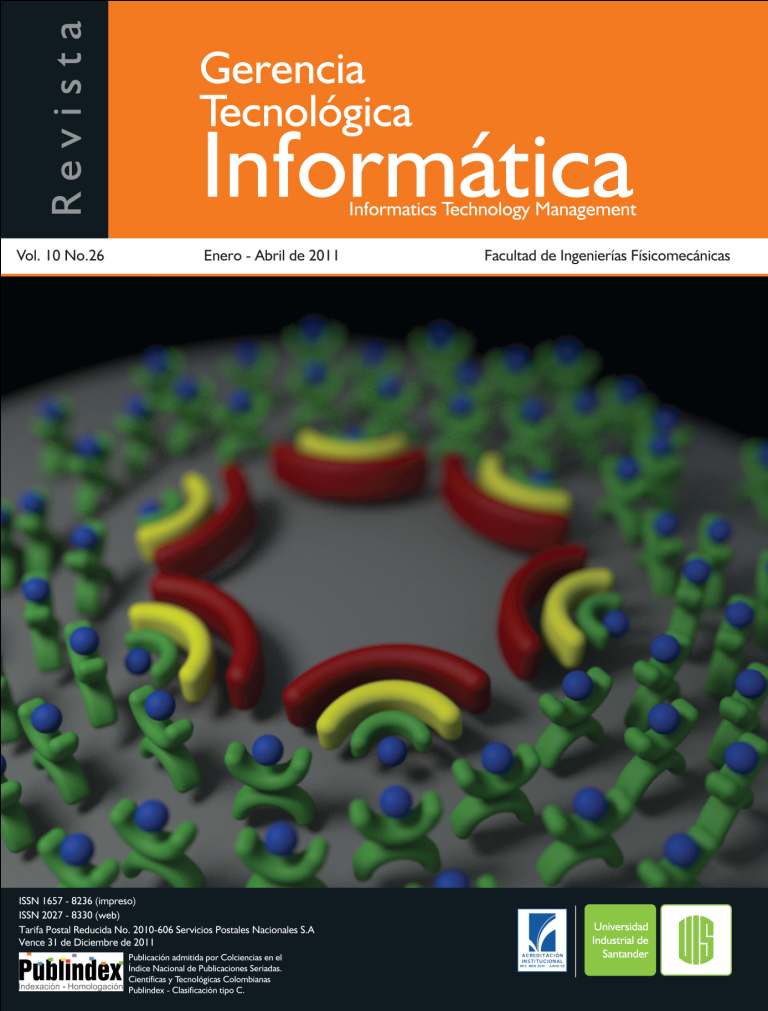GENERACIÓN AUTOMÁTICA DE APLICACIONES SOFTWARE A PARTIR DEL ESTANDAR MDA BASÁNDOSE EN LA METODOLOGÍA DE SISTEMAS EXPERTOS E INTELIGENCIA ARTIFICIAL
Published 2011-10-20
How to Cite
Abstract
Son muchos los estudios que se han presentado a cerca de la generación automática de líneas de código, este artículo pretende presentar una solución a las limitaciones de una herramienta muy conocida llamada MDA, haciendo uso los avances tecnológicos de la inteligencia artificial y los sistemas expertos. Abarca los principios del marco de trabajo de MDA, transformando los modelos usados y añadiendo características a estos que permitirán hacer más eficiente esta metodología de trabajo. El modelo propuesto abarca las fases del ciclo de vida software siguiendo las reglas del negocio que hacen parte esencial un proyecto real de software. Es con las reglas del negocio que se empieza a dar la transformación del estándar MDA y se pretende dar un aporte que contribuya a automatizar las reglas del negocio de forma tal que sirva para la definición de las aplicaciones en todo el ciclo de vida que la genera.
PALABRAS CLAVES: Automatización de aplicaciones software, UML, MDA: CIM, PSM, reglas de negocio, sistema experto, inteligencia artificial, ingeniería del software.
ABSTRACT
Many studies are presented about automatic generation of code lines, this article want to present a solution for limitations of a tool called MDA, using from Artificial intelligence technological advances and expert sistems. covering the principle of MDA work frame, transforming used models and adding characteristics to this that allow to make more efficient this work metodology. the proposed model covers the phases cycle life software, following the business rules that make essential part in a real software proyect. With the Business rules can start to transform the standard MDA aiming to give a contribution to automate the business rules that works to define aplications in all the life's cicle that generate it.
KEY WORDS: Automation aplications software, UML, MDA: CIM PSM, business rules, expert system, artificial intelligence, software engineering.
Downloads
References
- [I] UML y Patrones, Craig Larman, Prentice Hall,2edición 2003
- [II] Revista Software Gurú conocimiento enpráctica, N°. 19 Febrero-Abril 2008 pag. 36
- [III] Articulo “Articulo “BOM–Lazy: gestión dela variabilidad en el desarrollo de SistemasExpertos mediante técnicas de MDA”, MaríaGómez, Abel Gómez, Mª Eugenia Cabello,Isidro Ramos, Universidad Pontificia deValencia y Universidad de Colima.
- [IV] Object Management Group http://www.omg.org/
- [V] Generación automática de restricciones deintegridad http://jordicabot.com/papers/DSDM05.pdf
- [VI] “Executable UML, A Foundation for ModelDriven Architecture”, S. J. Mellor, M. J. Balcer
- [VII] “MDA Explained, The Model DrivenArchitecture: Practice and Promise”, A. Kleppe,J. Warmer, W. Blast
- [VIII] Business Process Modeling http://www.bpmodeling.com/
